The actors are well rewarded in Cambridge
Was Shakespeare among them?
Early in William Shakespeare’s career as a dramatist and actor, the Lord Chamberlain’s Men played in Cambridge.
It is possible that Shakespeare was with the company as well as Richard Burbage, who was becoming the most popular actor of the time and was acclaimed for his performances in roles such as Richard III.
-
![]()
Much ado near me
Hear more Shakespeare stories on BBC Radio Cambridgeshire
-
![]()
Shakespeare Festival 2016
The BBC celebrates the genius of the bard
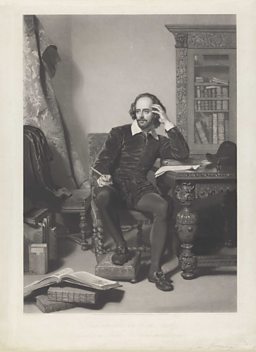
Their name came from their patron. Henry Carey, 1st Lord Hunsdon, was the Lord Chamberlain, one of the chief officers of the royal household, and was generally responsible for organising all court functions.
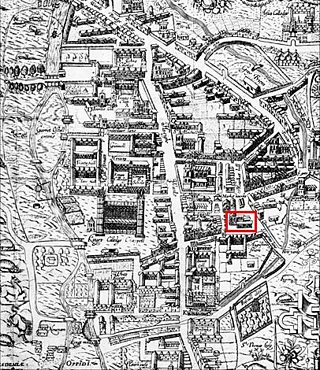
The records say that the Lord Chamberlain’s Men performed once in a period between 29 September 1594 and 28 September 1595.
Their payment was a generous 40 shillings.
We do not know exactly what they performed as the title of the play was not mentioned in any record but it could have been any of the plays in their repertoire at the time.
This included the Henry VI plays, both Parts 1 and 2, Richard the Third, Titus Andronicus, The Taming of the Shrew and The Two Gentlemen of Verona.
If Richard III was performed, the part of the crook-backed King would have provided ample opportunity for Burbage to display his versatility.
The performance would probably have taken place at the guildhall.
As the seat of civic government and centre for festive occasions, Cambridge's guildhall was probably the venue for most performances by touring entertainers before the mayor and city officials, recorded from the early 15th century to the early 17th century.
The medieval guildhall was located on the south side of the marketplace, its ground level open and the upper storey supported on arches.
The guildhall that the Lord Chamberlain’s Men performed in was built between 1386 – 87 but it was demolished, and rebuilt on or near the same site in 1782 by architect James Essex. In its turn this 18th century building was also demolished to make way for a new Guildhall to be built in the 1930s.
Their patron, Henry Carey, 1st Lord Hunsdon, was the Lord Chamberlain, one of the chief officers of the royal household, and was generally responsible for organising all court functions.
Just who were the Lord Chamberlain’s Men?
When the Chamberlains’ Men was first formed in late spring of 1594, it is very likely that Shakespeare was indeed one of their actors, as well as a contributing playwright, possibly recruited from the remnants of Pembroke’s Men, a company known to have hit hard times the previous year.

The Lord Chamberlain’s Men was a company of actors for whom Shakespeare wrote most of his acting and writing career.
They kept this name under the reign of Elizabeth I, until James I came to the throne in 1603 when he renamed them ‘The King’s Men’ under official royal patent.
Actor Richard Burbage took the lead roles, including Hamlet and Othello and King Lear and Macbeth.
The main members formed a core of eight ‘sharers’ who split both the profits and debts. As well as Burbage and Shakespeare, they also included William Kempe - whose name is seen spelled with and without an 'e' and took the part of the company’s clown – plus young actors Henry Condell and John Heminges, most famous today for collecting and editing Shakespeare’s plays as the First Folio in 1623.
1594 – A Busy Year for Shakespeare and the Lord Chamberlain’s Men
We know from the diary of London theatre manager Philip Henslowe where the Lord Chamberlain’s Men performed elsewhere in 1594 – around the time of their visit to Cambridge.
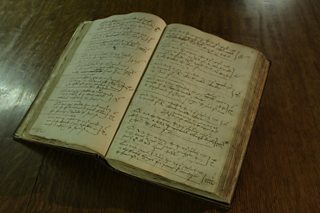
There is a note of playhouse receipts at the Newington Butts Theatre on the outskirts of London made in June 1594, which shows the newly formed Lord Chamberlain's Men performing there alongside another performing group the Lord Admiral's Men. They both played there for ten days, joining up – or alternating with each other - because other, better-positioned, playhouses were apparently closed.
Thanks to the unique manuscript known as ‘Henslowe’s Diary’, we even know the seven plays mounted during this brief period before the Lord Admiral’s Men returned to the Rose Theatre and Chamberlain’s players, including Shakespeare, moved north of the river to Richard Burbage’s theatre - the Globe was not built until 1599.
What is notable in Henslowe’s list of receipts from the performances between 3 and 13 June, 1594, is the mention of two of Shakespeare’s plays. Titus Andronicus performed twice for a fee of 12 and seven shillings respectively and The Taming of the Shrew appeared for nine shillings. Both plays were to become part of the repertory of Chamberlain’s men, but another popular play also mounted at the time, Marlowe’s The Jew of Malta, remained with the Admiral’s Men and their star player, Edward Alleyn.
Although we have no actual record that Shakespeare himself was a member of Chamberlain’s Men when the company was first formed in late spring 1594, it is very likely that he was indeed one of their actors, as well as a contributing playwright, possibly recruited from the remnants of Pembroke’s Men, a company known to have hit hard times the previous year.
We also find Shakespeare’s name listed as one of the primary recipients, with Will Kemp and Richard Burbage, of payment at court for the Lord Chamberlain’s Men performance of two comedies on 26 and 28 December later the same year.
Written by Sally-Beth MacLean, General Editor and Director of Research, Records of Early English Drama (REED)
Shakespeare on Tour
From the moment they were written through to the present day, Shakespeare’s plays have continued to enthral and inspire audiences. They’ve been performed in venues big and small – including inns, private houses and emerging provincial theatres.

BBC English Regions is building a digital picture which tracks some of the many iconic moments across the country as we follow the ‘explosion’ in the performance of The Bard’s plays, from his own lifetime to recent times.
Drawing on fascinating new research from Records of Early English Drama (REED), plus the British Library's extensive collection of playbills, as well as expertise from De Montfort University and the Arts and Humanities Research Council, Shakespeare on Tour is a unique timeline of iconic moments of those performances, starting with his own troupe of actors, to highlights from more recent times. Listen out for stories on Shakespeare’s legacy on your BBC Local Radio station from Monday 21 March, 2016.
You never know - you might find evidence of Shakespeare’s footsteps close to home…
Craig Henderson, BBC English Regions
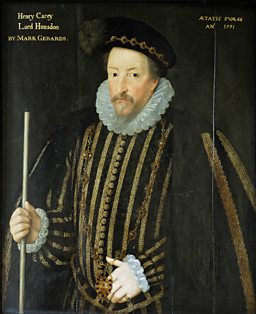
Related Links
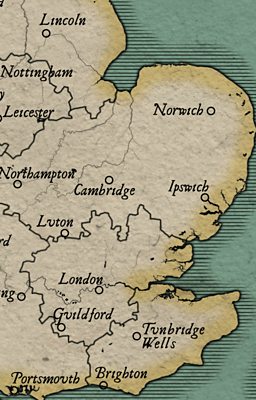
-
![]()
Shakespeare Lives
The nation’s greatest performing arts institutions mark 400 years since the Bard's death
Shakespeare on Tour: Around Cambridge
-
![]()
Cambridge students put on a Christmas satire
'Footlights' Shakespeare-style
-
![]()
Huntingdon gets in on the act
Macbeth in Huntingdon
-
![]()
Cambridge Footlights
And much ado about Jonathan Miller's Shakespeare
Shakespeare on Tour: Around the country
-
![]()
Ira Aldridge
Ira Aldridge - the first black Shakespearean actor
-
![]()
Blossoming at the Rose Theatre
Shakespeare, budding playwright and actor, at the Rose Theatre from the spring of 1592
-
![]()
Will Kemp dance finished in Norwich
Why did Will Kemp, Shakespeare's former clown, dance from London to Norwich?
-
![]()
London's Female Romeo
Charlotte Cushman, the American actress who took Victorian London by storm










